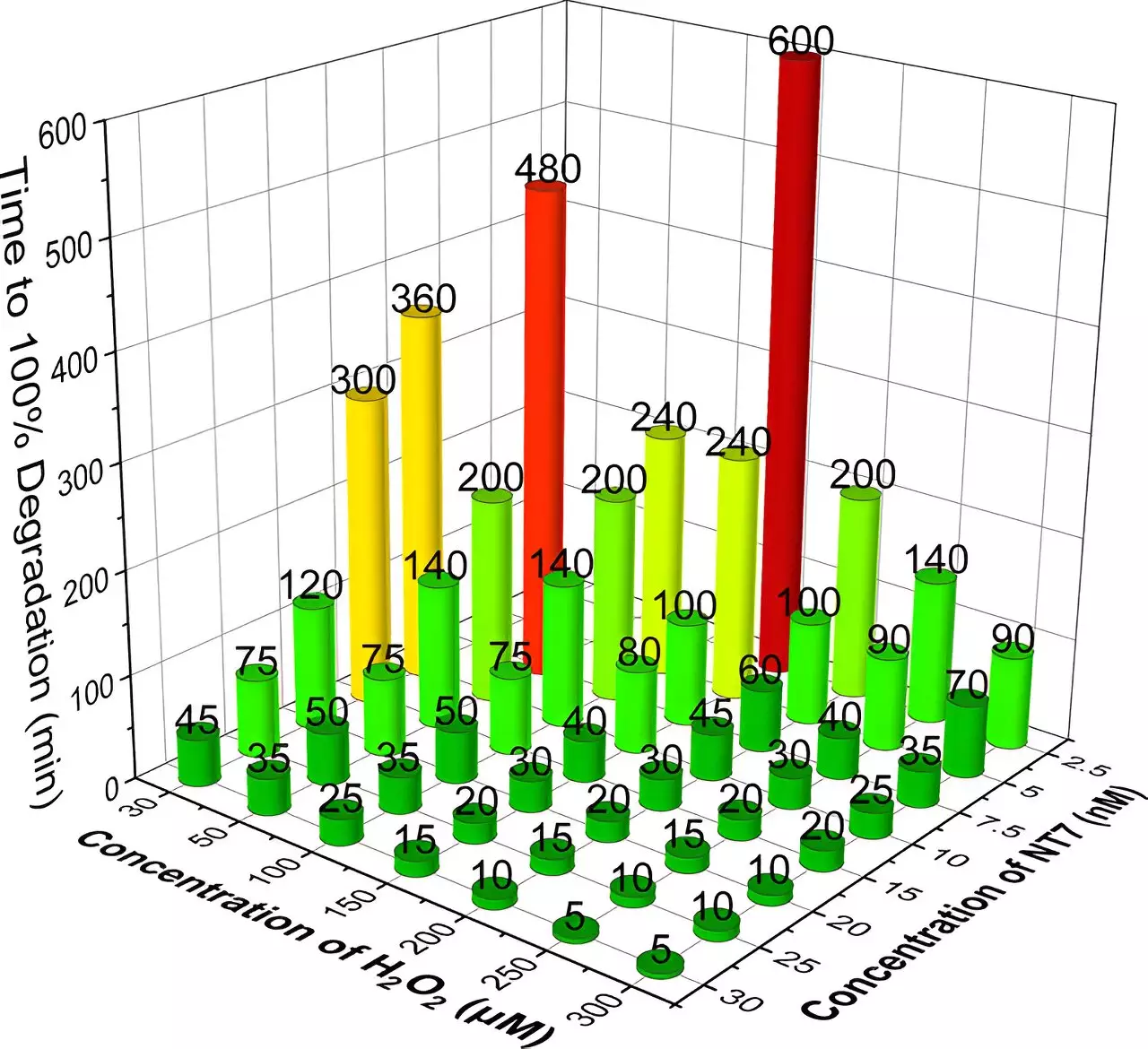The escalating presence of pharmaceutical contaminants in freshwater resources poses a significant environmental challenge. With thousands of prescription medications used for human and animal health, many of these substances inevitably find their way into municipal wastewater systems. Flushed medications and unused prescriptions contribute to a cocktail of micropollutants that escape detection in conventional wastewater treatment processes. This growing issue presents serious risks to aquatic life and, by extension, the ecosystems they support. Responding to this urgent scenario, researchers at Carnegie Mellon University have developed an innovative solution that leverages TAML catalysts and hydrogen peroxide for efficient degradation of these hazardous compounds.
The research team, led by Terry Collins, a prominent figure in green chemistry, introduced a next-generation TAML (Tetra-Aryl Methylated Lignin) catalyst known as NewTAML. This catalyst exemplifies a shift towards sustainable water purification methods. It operates at ultra-low concentrations, which not only maintains high efficacy but also significantly reduces the operating costs associated with water treatment. The NewTAML catalyst exhibits an extraordinary ability to activate hydrogen peroxide, facilitating the degradation of various pharmaceuticals commonly found in wastewater, including antibiotics, synthetic estrogens, and other drugs.
One of NewTAML’s most remarkable features is its unique operational dynamic. Lowering the concentration of the catalyst seemingly enhances its longevity and effectiveness, allowing it to perform better as its dosage decreases. This counterintuitive property challenges preconceived notions of catalyst application and paves the way for more efficient water contamination treatment strategies.
In their comprehensive study, the Carnegie Mellon researchers assessed the performance of NewTAML in degrading a selection of six high-priority pharmaceuticals. Their experiments traversed various conditions, beginning with controlled laboratory environments before extending their inquiry to real-world scenarios, such as municipal wastewater and natural water bodies. This multifaceted approach provided a robust understanding of the catalyst’s capabilities in different settings.
Notably, the results were impressive. Five out of the six contaminants were rendered undetectable within six hours of treatment using minuscule amounts of the NewTAML catalyst alongside hydrogen peroxide. Even at higher concentrations, the pharmaceutical contaminants were degraded significantly, demonstrating NewTAML’s potential effectiveness in tackling urban and rural water pollution.
Addressing Limitations of Existing Wastewater Treatments
Conventional wastewater treatment systems are often inadequate in entirely removing these micropollutants, which can severely affect aquatic life and disrupt ecosystems. Advanced treatment technologies like ozonation and activated carbon sorption often prove cost-prohibitive, especially for smaller municipalities and rural areas. In contrast, the TAML-based approach promises a more accessible, affordable option for comprehensive water purification.
Collins highlights the simplicity of employing the TAML/peroxide method, emphasizing that the process involves straightforward mixtures of dilute solutions. This ease of application encourages broader adoption across various settings, indicating a potential shift in how wastewater and contaminated water bodies can be treated effectively and sustainably.
The implications of this research extend beyond immediate water treatment applications. The presence of pharmaceuticals in drinking water and natural ecosystems poses long-term health risks to wildlife and humans alike. The adoption of TAML catalysts could serve as a pivotal solution for mitigating these risks, fostering healthier ecosystems and safeguarding biodiversity.
Looking ahead, the research team at Carnegie Mellon aims to transition their laboratory results into practical applications, moving toward extensive field testing. Sudoc, a startup company licensed to commercialize these TAML-based solutions, recently secured substantial funding to expedite this process. As they aim to penetrate the European water treatment market, this lays the groundwork for widespread adoption and implementation of these groundbreaking technologies.
In sum, the application of TAML catalysts in the degradation of pharmaceutical micropollutants represents a promising advancement in wastewater treatment technologies. By providing a cost-effective, environmentally safe, and efficient means to purify contaminated water, this innovation addresses a pressing global challenge. As researchers continue to refine their methods and broaden their scope, the potential for TAML catalysts to revolutionize water treatment and safeguard ecosystems emerges as a beacon of hope in the realm of environmental science. The ongoing pursuit of these solutions marks a vital step toward restoring balance to our water resources and ensuring the health of our planet.


Leave a Reply